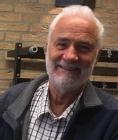general-el: FM detection principle
? general-el: FM detection principle

Hello,
This model carries a sticker "FM The Armstrong system" on its backpanel. It seems to be a variant on the Foster-Seeley discriminator. Does somebody have more info on this Armstrong system?
Thanks
To thank the Author because you find the post helpful or well done.
general-el: FM detection principle

Following the FM Detection Circuit of the set, we see a normal Foster-Seeley arrangement which was not invented by E. H. Armstrong.
To my opinion, the mentioned sticker refers to the fact that broadcast by altering the frequency instead of the amplitude of the carrier wave was indeed an invention by Armstrong in the early 30's.

Above the US Patent which secure all the rights regarding Frequency Modulation solely to him.
As a result of this, Radio Manufacturers have to consult E. H. Armstrong first before starting any production of FM Radio's. I don't know for how long this protection was in force....
Kind regards
The max. width of a picture is 600 pixel, have reshaped ... for not let exploding the page.
To thank the Author because you find the post helpful or well done.
general-el: invention by Armstrong in the early 30
He successfully demonstrated the FM system. It was a pre-existing concept, and like the Superhet concept mathematical. Neither should have been permitted patents which held back development. RCA particularly damaged the development of the superhet.
Indeed the sticker is just using "FM The Armstrong system" as long hand for FM. There are many ways to implement the modulation or demodulation (Detection).
There is a quaint belief that a patent or even a demonstration is an Invention. Most inventions are acutally just implementations of ideas well known to the experts. Put Hedy Lamarr's name on a patent and you can claim she invented Spread spectrum. She didn't, nor did the muscian friend who wrote the Patent. Baird is constantly quoted in UK as inventing TV. He had a dead end technology invented by Nipkow.
Armstrong was a good innovator exploited and badly rewarded by large Corporations.
To thank the Author because you find the post helpful or well done.
general-el: invention by Armstrong in the early 30

Hello Wolfgang and Michael,
Thanks a lot for your explanation. Much appreciated.
To thank the Author because you find the post helpful or well done.
general-el: invention by Armstrong in the early 30
FM was more than just a concept prior to Armstrong's work. Prior to his work, it was narrow frequency deviation FM, with similar bandwidth to that of AM. It saw only limited use however, because it had few, if any, advantages over AM.
What Armstrong invented was wideband FM. He was able to demonstrate that wideband FM gave significant improvement in signal/noise ratio. Prior to his work, it had been generally assumed that a narrower bandwidth would give better SNR. Armstrong worked out the math that proved the opposite. He then developed the FM broadcasting system used in the United States.
While Armstrong may receive undeserved credit for some radio inventions, I think his work on wideband FM is a fairly significant contribution to radio technology.
To thank the Author because you find the post helpful or well done.